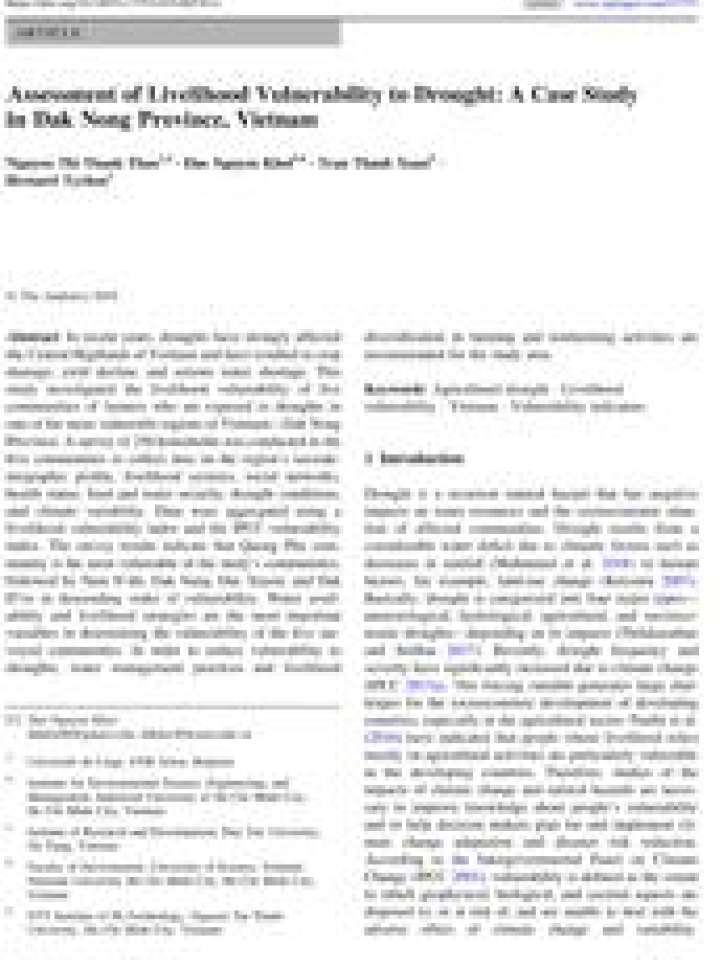Assessment of livelihood vulnerability to drought: A case study in Dak Nong province, Vietnam
In recent years, droughts have strongly affected the Central Highlands of Vietnam and have resulted in crop damage, yield decline, and serious water shortage. This study investigated the livelihood vulnerability of five communities of farmers who are exposed to droughts in one of the more vulnerable regions of Vietnam—Dak Nong Province. A survey of 250 households was conducted in the five communities to collect data on the region’s sociodemographic profile, livelihood systems, social networks, health status, food and water security, drought conditions, and climate variability. Data were aggregated using a livelihood vulnerability index and the IPCC vulnerability index.
The survey results indicate that Quang Phu community is the most vulnerable of the study’s communities, followed by Nam N’dir, Dak Nang, Duc Xuyen, and Dak D’ro in descending order of vulnerability. Water availability and livelihood strategies are the most important variables in determining the vulnerability of the five surveyed communities. In order to reduce vulnerability to droughts, water management practices and livelihood diversification in farming and nonfarming activities are recommended for the study area.
Explore further
